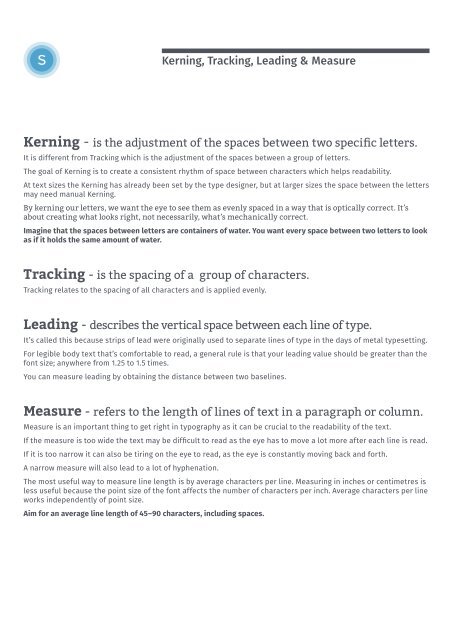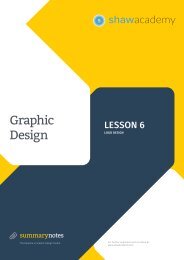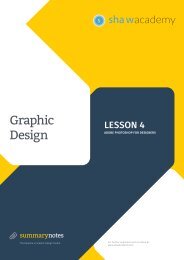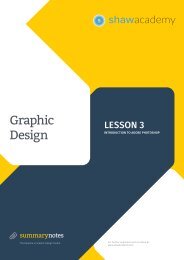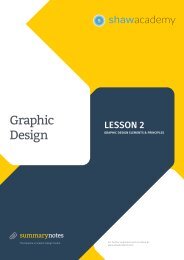Create successful ePaper yourself
Turn your PDF publications into a flip-book with our unique Google optimized e-Paper software.
S<br />
Kerning, Tracking, Leading & Measure<br />
Kerning - is the adjustment of the spaces between two specific letters.<br />
It is different from Tracking which is the adjustment of the spaces between a group of letters.<br />
The goal of Kerning is to create a consistent rhythm of space between characters which helps readability.<br />
At text sizes the Kerning has already been set by the type designer, but at larger sizes the space between the letters<br />
may need manual Kerning.<br />
By kerning our letters, we want the eye to see them as evenly spaced in a way that is optically correct. It’s<br />
about creating what looks right, not necessarily, what’s mechanically correct.<br />
Imagine that the spaces between letters are containers of water. You want every space between two letters to look<br />
as if it holds the same amount of water.<br />
Tracking - is the spacing of a group of characters.<br />
Tracking relates to the spacing of all characters and is applied evenly.<br />
Leading - describes the vertical space between each line of type.<br />
It’s called this because strips of lead were originally used to separate lines of type in the days of metal typesetting.<br />
For legible body text that’s comfortable to read, a general rule is that your leading value should be greater than the<br />
font size; anywhere from 1.25 to 1.5 times.<br />
You can measure leading by obtaining the distance between two baselines.<br />
Measure - refers to the length of lines of text in a paragraph or column.<br />
Measure is an important thing to get right in typography as it can be crucial to the readability of the text.<br />
If the measure is too wide the text may be difficult to read as the eye has to move a lot more after each line is read.<br />
If it is too narrow it can also be tiring on the eye to read, as the eye is constantly moving back and forth.<br />
A narrow measure will also lead to a lot of hyphenation.<br />
The most use ful way to mea sure line length is by av er age char ac ters per line. Mea sur ing in inches or centimetres is<br />
less use ful be cause the point size of the font af fects the num ber of char ac ters per inch. Av er age char ac ters per line<br />
works in de pen dently of point size.<br />
Aim for an av er age line length of 45–90 char ac ters, in clud ing spaces.


